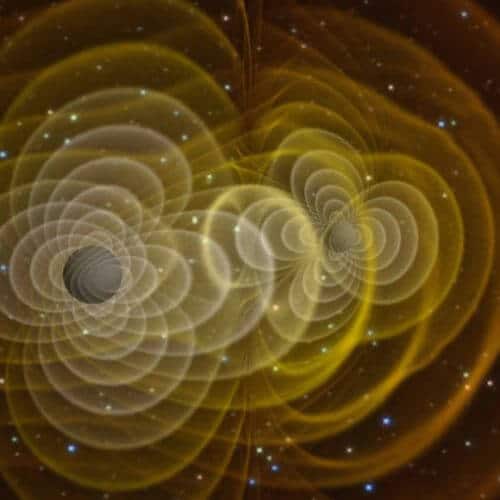On August 14, another event was discovered that created gravitational waves, this time no less than three observatories were waiting for it, which greatly increased the discovery itself as well as the accuracy of its location

On February 11, 2016, scientists at the LIGO Observatory announced the first detection of gravitational waves. This development, which confirmed the prediction of Einstein's theory of general relativity from a century ago, and opened new avenues of research for cosmologists and astrophysicists. Since then, more such events have been discovered, which are the result of black holes merging.
The last discovery was on August 14, 2017 when three observatories - two LIGO observatories in Louisiana and Washington state, and the VIRGO observatory in Italy - simultaneously detected the gravitational waves created when a black hole merged. It was the first time that gravitational waves were detected simultaneously from three facilities around the world, indicating the opening of an era of research in an international network of this cosmic phenomenon.
The research shared by the three observatories has been accepted for publication in the journal Physical Review Letters. The event, known as GW170814, was observed at 10:30:43 GMT on August 14, 2017.
Frans Córdoba, CEO of the NSF National Science Foundation, which finances the LIGO observatories, says: "A little over a year and a half ago, NSF announced that the LIGO observatory confirmed for the first time the discovery of gravitational waves resulting from the collision of two black holes in a galaxy a billion light-years away. Today, we are pleased to announce the first discovery made in partnership between LIGO and VIRGO, at observatories located thousands of kilometers apart. This is an exciting milestone in the growing international scientific effort to unravel the extraordinary mysteries of our universe."
According to the researchers, the event was caused by the merger of two black holes with 31 and 25 solar masses, respectively. The event took place about 1.8 billion light years from Earth, and led to the formation of a spinning black hole with a mass of about 53 solar masses. This means that about three solar masses were converted into gravitational wave energy during the merger, which was then detected by LIGO and Virgo.
These are advanced observatories - LIGO observatories are the second generation of gravity detectors that took the place of detectors built and operated by Caltech and MIT that collected data unsuccessfully between 2002 and 2010. In 2015, the upgraded observatories began to operate and manage two observation routes. Meanwhile, the original VIRGO detector that made observations between 2003 and October 2011, again unsuccessfully joined the network in February 2017, and the two bodies - the American and the European - also began to cooperate and jointly analyze the data discovered in all the detectors and as mentioned in August 2017, the first simultaneous detection took place.
An artist's illustration of two merging black holes that are theorized to be the source of gravitational waves. Illustration: Bohn, Throwe, Hébert, Henriksson, Bunandar, Taylor, Scheel / SXS
"This is just the beginning of a network of observations where VIRGO and LIGO work together," said David Shoemaker of MIT. "With the next sub-arrow planned for 2018, we can expect such discoveries on a weekly or even more frequent basis."
Not only will the number of events that may be detected increase, but it will also be possible to pinpoint them with greater precision. In fact, moving from a network of two to three detectors is expected to increase the chance of locating the source of GW170814 by a factor of 20.
Prof. Laura Cadonatti of Georgia Tech and a member of the LSC team “This increased precision will allow the entire astrophysics community to uncover even more exciting discoveries. A smaller search area allows for follow-up observations with telescopes and satellites of cosmic events that produce gravitational waves and light emissions, such as neutron star collisions."
"Ultimately, introducing more detectors into the gravitational wave network will also enable a more detailed examination of Einstein's theory of general relativity." says Prof. Kadonati.
See more on the subject of science:
- A new detector will determine the origin of gravitational waves
- Proof of Einstein's theory of general relativity: "The discovery of gravitational waves opens a new window to the universe"
- First evidence for the discovery of gravitational waves
- Einstein's mistakes
- Gravitational waves: the most important discovery of 2016 according to the editors of Science magazine
- A third gravitational wave event has been discovered; Confirms the existence of a new type of black holes

3 תגובות
very interesting.
This basically means that there is a consistent and reliable way to detect black hole mergers from billions of years ago.
It's a shame that the translation towards the end of the article (wrong in this case) of VIRGO to Virgo, was not corrected in the editing.